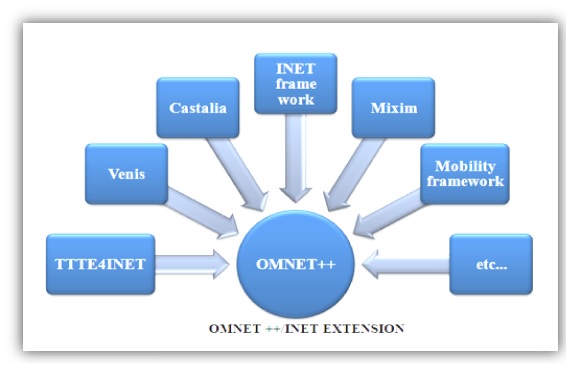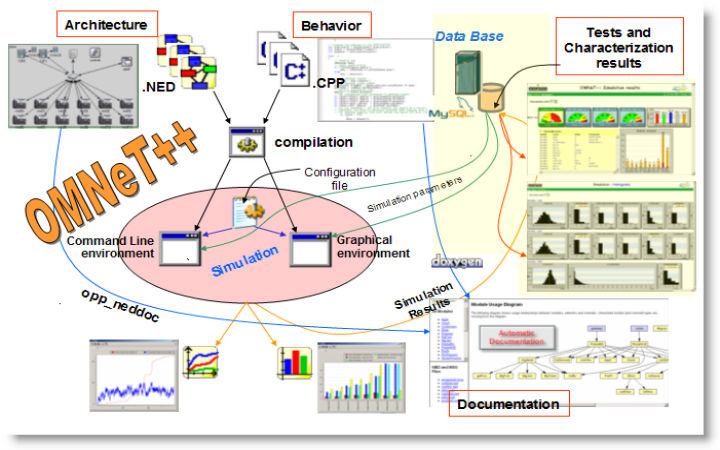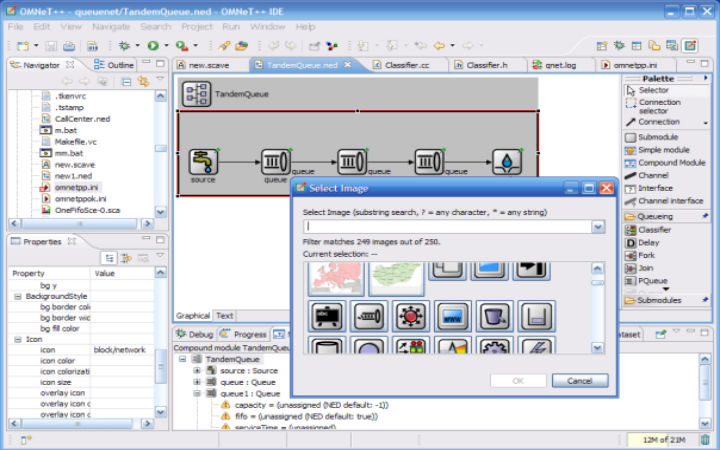Omnet++ Projects for Research Scholars.
Objective modular network test bed in C++ is abbreviated as omnet++. Omnet++ projects helps to simulate network in a components of network architecture. Omnet++ is available free to use, modify and distribute in academic and educational institutions under Academic Public Licence. For corporate, a license must be bought from Omnest. Omnet++ is a popular simulation network that gives components for network architecture. Omnet++ provides infrastructure for writing simulation framework.Omnet++ Projects provide knowledge on network formation and communication among nodes and sensor networks. Omnet++ framework makes debugging and tracking easier. Sample Omnet++ projects are queuing system simulation, managing workstation, ATM and optical network simulation and TCP/IP model development. Omnet++ provides reconfigurable and structured models which is academically fruitful.
Castalia Omnet:
It is a simulator. It simulates wireless sensor network and general communication network. Empirical data measurement is the basis of realistic and generic framework for channel. Australia National ICT developed this.
Features of Castalia:
- Provides flexible carrier sensing.
- Also provides flexible simulation for physical process model.
- Supports mobility of node.
- Easy to adopt and support extension.
- Provides radio model based simulation for low power consumption.
- MAX and multiple routing protocols are available.
- It is a complex model for temporal path loss.
Omnet ++ Extension:
Several extensions for omnet++ simulation framework is possible, Some Omnet++ Extension are listed below, our concern utilizes different iterations based upon your requirements in Omnet++ Projects.
TTE4INET: It is time triggered ethernet for INET. It allows direct integration of application codes. It has the parts of MAC and physical layer which provide extension of INET.
Veins: It is vehicle network simulation. It has OMNET++ and SUMO simulation. In which the first one is to simulate networks and the later is for simulating road traffic. Veins use the traffic control interface. There are two new extensions of veins they are veins LTE and PLEXE.
INET Framework: It supports applications that are communication oriented. IEEE 802.11 and Wi-Fi is used to support the IP connection. Protocols such as IPV4, TCP, IPV6, UDP and INET7 can be implemented.
Mixim: It supports mobile network, radio propagation, connection management and mobility framework.

Mobility Framework: Berlin’s technical university built this. It has network, applications, mobility and MAC layers.
We guide to implement Omnet++ Projects with best customer support.Feel Outstanding customer support from industry experts.
We guarantee 100% output for Omnet++ Projects.Types of simulation network will be chosen based on requirements.Create original Omnet++ Projects with customized support from Technical members.
Simulation Models used in Omnet++ Projects.
Several network model are implemented in Omnet++ Projects based on requirement protocols.
Scope of OMNET++ and INET:
OMNET++ 4.5 is the latest version available in market from July 2014. Its features are to redesign and reuse single window mode. This version is now improved to OMNET++ 4.6.
INETs recent version is INET 2.99.0. It has a latest physical model which has Mixim and INET layers. This version aims to support parallel hardware and provides extensibility.
Merits and Demerits of Omnet++:
GUI is the biggest merit. It can analyze the state of components. These components made up by C++ language. It supports windows, Linux and UNIX operating systems.
The demerits are hard combination models, greater chance of bugs and limited protocols.
Advantages of omnet++ Projects.
- Use C++ language to write code.
- Simulation is portable between windows, DOS and Unix-based system.
- Without modifying source code we can rebuild the system by using parameters.different structures can be simulated in this tool.
- GUI offers many possibilities to follow and debug the simulation flow.
- Use parameter-watching functions and plot diagrams
- Can able to use pre-defined classes and implemented modules
- Can run simulation on many machines at the same time using the PVM support.
- OMNeT++ projects has clear, well-defined, documented and hierarchically nested modules, which are available in source code, so you can debug and/or extend them.
Executed my Omnet++ Projects as per my requirement. wonderful Team.Got best support from team member.
Trained very well in Omnet++ Projects.Would recommend academic college projects to my friends.
Helped me to complete my project from middle as per my staff requirement.






